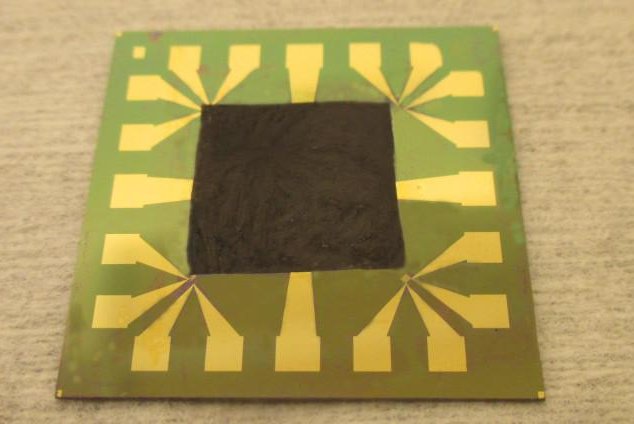Researchers have created a graphene film that is extra adhesive and helps efficiently cool electronic systems. Photo by Chalmers
GOTHENBURG, Sweden, July 10 (UPI) -- Soon, there will be no choice but to begin writing about the dwindling number of things that graphene can't do. It's becoming less of a surprise each time the wonder material claims another advantage.
It's latest ability: cooling. Researchers at Chalmers University of Technology, in Sweden, have developed a graphene-based film that effectively and efficiently cools electronic systems.
As modern electronics get increasingly complex, and yet squeezed into increasingly slimmer, more compact packages, overheating has become a puzzling problem.
Graphene -- the material made of a single-atom carbon layer -- to the rescue. The solution was detailed this week in the journal Advanced Materials.
Previous research showed that a layer of graphene had a cooling effect on silicon-based electronic systems. But the cooling effect was minimal, so researchers stacked more layers to amplify the effect. It worked, but also presented another problem. Extra layers diminished the material's ability to remain adhered to the device.
Now, researchers at Chalmers say they've solved the adhesive issue.
"We have now solved this problem by managing to create strong covalent bonds between the graphene film and the surface, which is an electronic component made of silicon," researcher Johan Liu said in a press release.
After testing a number of additives, researchers found that treating the graphene with (3-Aminopropyl) triethoxysilane (APTES) molecules -- as well as a heating and hydrolysis -- was the best way to create extra sticky silane bonds between the graphene film and the electronic component.
"Increased thermal capacity could lead to several new applications for graphene," Liu said. "One example is the integration of graphene-based film into microelectronic devices and systems, such as highly efficient Light Emitting Diodes (LEDs), lasers and radio frequency components for cooling purposes. Graphene-based film could also pave the way for faster, smaller, more energy efficient, sustainable high power electronics."















